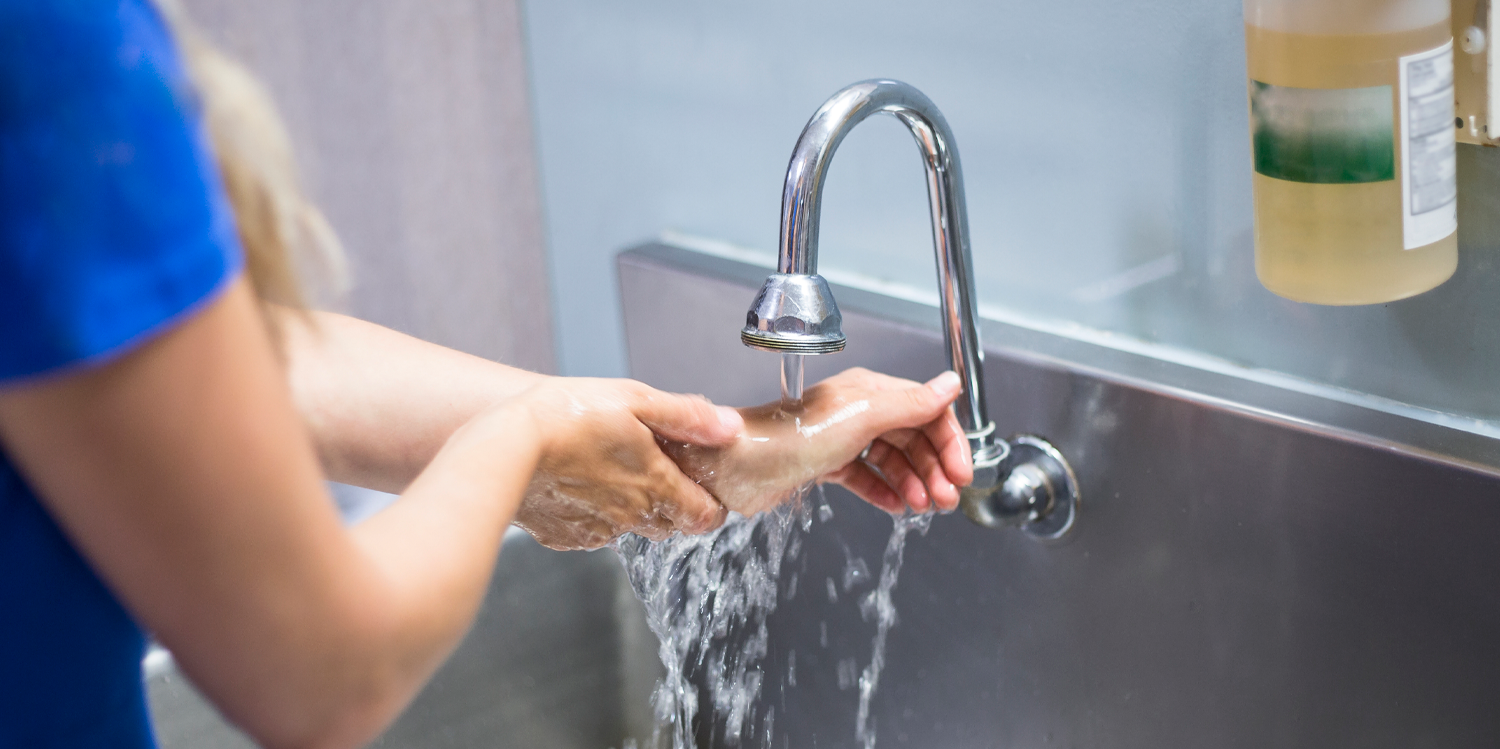We all know the importance of washing our hands to keep germs at bay, but it turns out the sink may not be as hygienic as we think.
New research has found that splash back from the basin may contain bacteria or viruses that could contribute to infection spread in hospitals and aged care facilities.
It is not the act of washing our hands that poses a risk – after all, that’s unavoidable in healthcare settings – but the speed at which the water pours from the tap.
You would be forgiven for thinking that there is a greater infection risk with a faster flow, but it is the opposite. The slower the water flows, the higher the risk of bacteria or viruses escaping from the sink in tiny droplets.
According to the authors of the Flinders University study, these airborne water droplets pose a significant public health concern.
Lead author and Flinders adjunct academic Dr Claire Hayward, a postdoctoral researcher working on antimicrobial resistance in the community, said the research highlighted an often-overlooked factor in infection control.
“In hospitals and aged care facilities, bioaerosols generated from handwashing basins have been linked to healthcare-associated infection outbreaks,” Dr Hayward said
“However, there has been limited research on how basin design parameters such as flow rate restrictors impact bioaerosol production and transmission routes.”
To put the theory to the test the authors looked at water flow restrictors and the rate at which bioaerosols were spread.
They found all three water flow restrictors tested produced water droplets small enough to be inhaled into the lungs.
Although there was no significant difference in the number of water droplets from the source water across different flow rates, lower flow rates led to a higher amount of bioaerosols from the drain and greater contamination from the drain to the faucet.
This suggests that while reducing water flow may help with water conservation, it could inadvertently increase the spread of potentially harmful microbes.
According to the Australian Institute of Health and Welfare (AIHW), the rate of Staphylococcus aureus bloodstream infections in WA public hospitals was 1.2 per 10,000 patient days in 2022/23, up from 1.1 in 2021/22 and above the national benchmark of one.
Western Australia’s 2022/23 rate was the highest in Australia. The next highest was Victoria at 0.9 per 10,000 patient days. The lowest was the NT with 0.5.
As for hand washing, according to the AIHW, between November 2022 and March 2023, doctors reported only washing their hands 76% of the time during five specific moments such as touching a patient or before a procedure. The national benchmark is 80%.
Senior study author Professor Harriet Whiley said the findings highlighted the complex relationship between plumbing design and infection control.
“By optimising design elements like aerators and flow rates, we may be able to reduce infection risks, but further research is needed to identify the safest and most effective configurations,” Professor Whiley said.
“The study underscores the importance of collaboration between product designers, engineers, and microbiologists to develop hand basin designs that balance functionality with infection prevention.”
Want more news, clinicals, features and guest columns delivered straight to you? Subscribe for free to WA’s only independent magazine for medical practitioners.
Want to submit an article? Email editor@mforum.com.au


